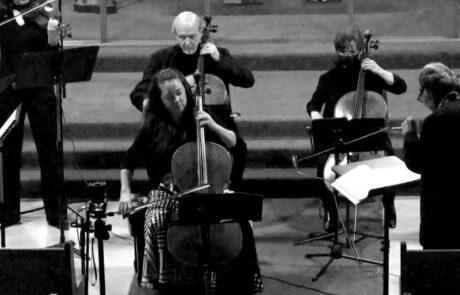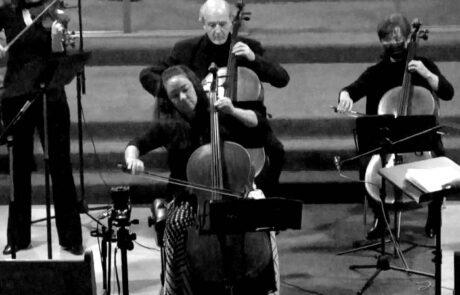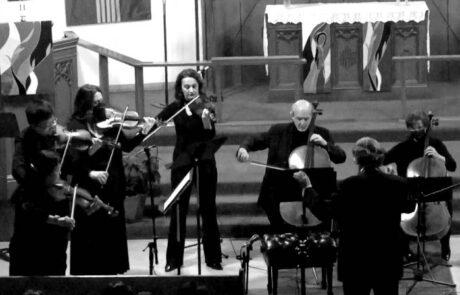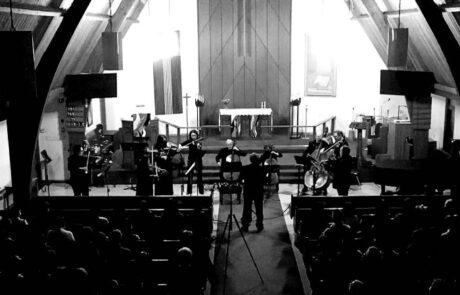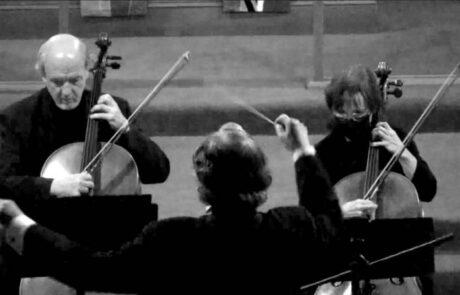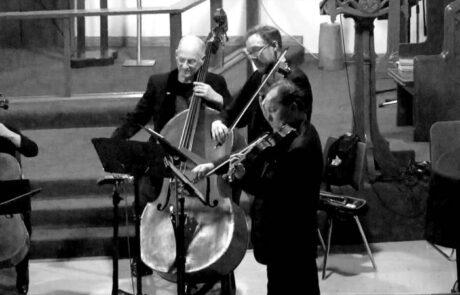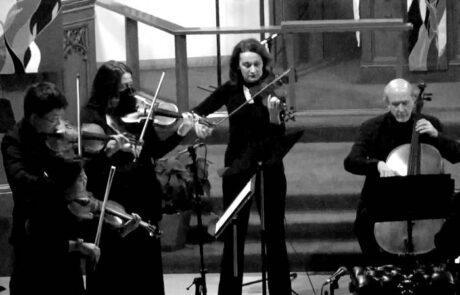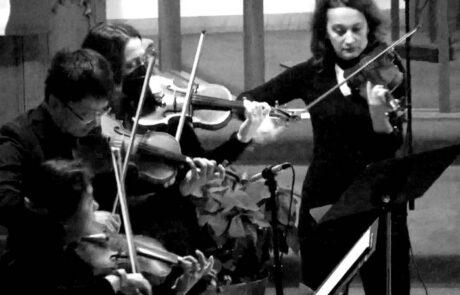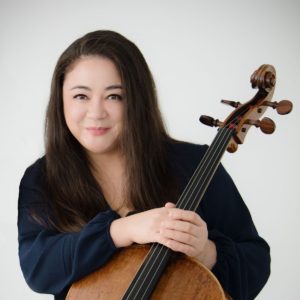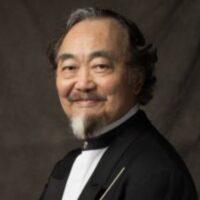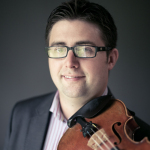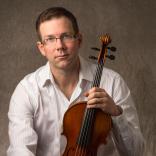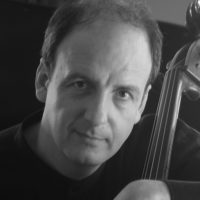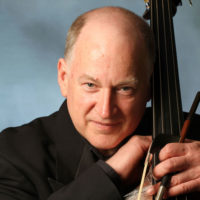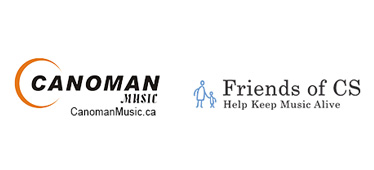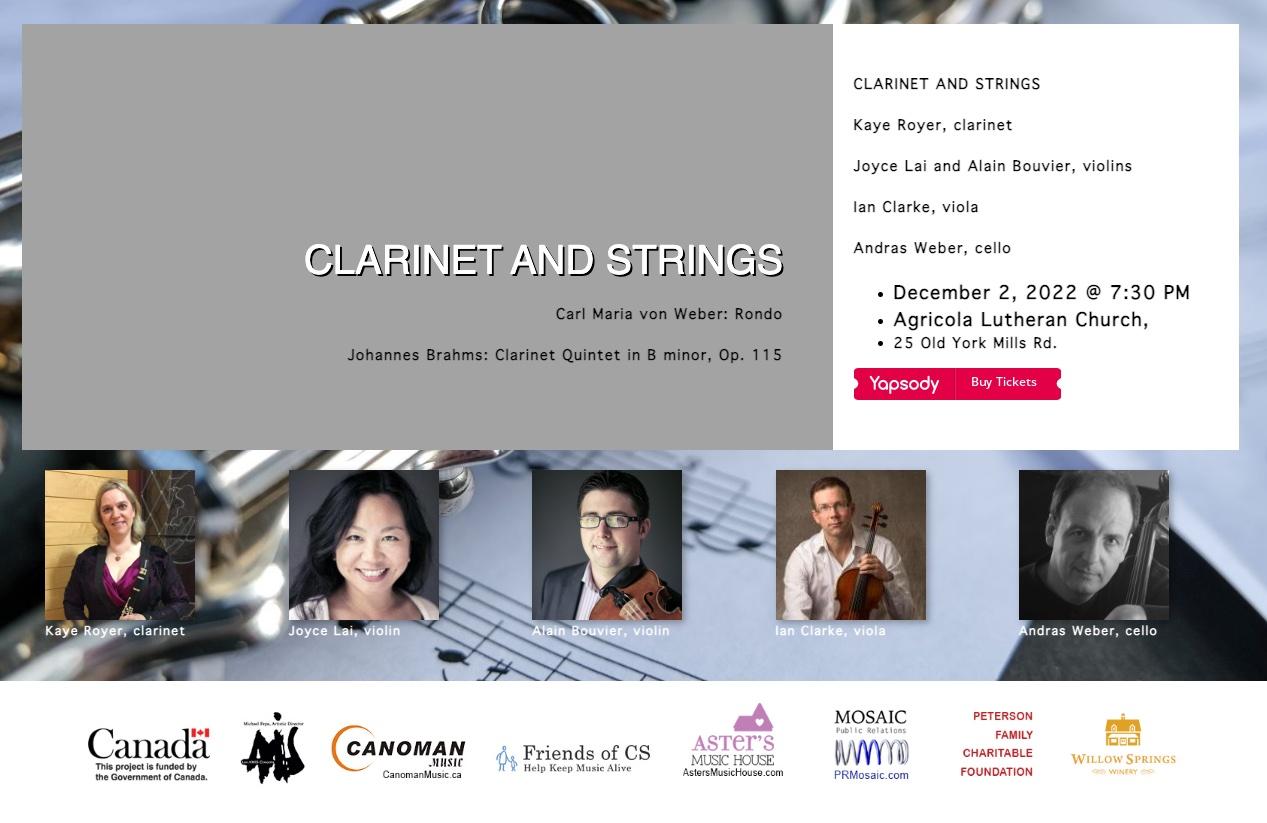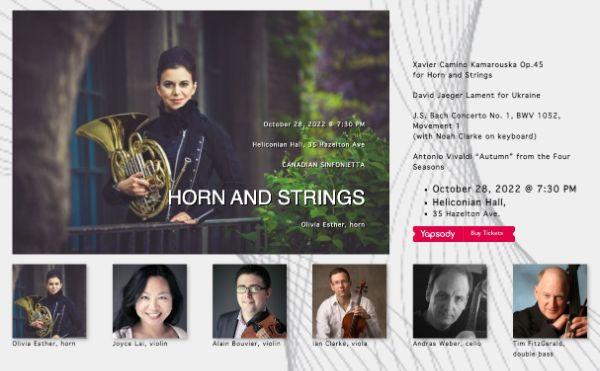CANADIAN SINFONIETTA
Saturday November 19, 2022- 7:30 PM
Agricola Finnish Lutheran Church
25 Old York Mills Rd., Toronto
Featuring:
RACHEL MERCER, cello
TAK NG LAI, conductor
Program
Jean Sibelius (1865-1957)
Romance in C, Op. 42 for string orchestra
Edvard Grieg (1843-1907)
Holberg Suite
Prelude
Sarabande
Gavotte
Air
Rigaudon
Jocelyn Morlock (b.1969)
Solace for string orchestra (2005)
Joseph Haydn (1732-1809)
Cello Concerto No. 1 in C major
Moderato
Adagio
Allegro Molto
Members of the Canadian Sinfonietta performing this evening:
First Violins: Joyce Lai, Calvin Cheng, Jonathan Yuen
Second Violins: Jennifer Burford, Irina Babuk
Violas: Aleksandar Gajic, Ian Clarke
Cellos: Andras Weber, Wendy Solomon
Double Bass: Tim FitzGerald
Biographies
Program Notes
Romance in C, Op. 42 by Jean Sibelius
In 1904, Finnish composer Jean Sibelius completed a little piece for string orchestra called the Romance in C. Sibelius, living with his wife Aino in Helsinki at the time but had plans to move out of the city to get away from temptations that were to detrimental the composer’s battle alcoholism. The couple purchased land near Lake Tuusula on which they would build a cottage on an estate they named Ainola. A series of concerts was arranged to help fund the construction of the new house. Among these was a concert in Turku, by the orchestra that premiered the Romance. Dedicated to artistic director José Eibenschütz, Sibelius himself conducted. The five-minute work is a whirlwind of emotions, ranging from tenderness and angst to longing and serenity, likely a reflection of the relationship between the composer and his wife.
Cello Concerto in C by Joseph Haydn
This Cello Concerto No. 1 in C is one of the most successful of Haydn’s works. A genuine masterpiece that vanished, only to be discovered years later. In this case, it was many years later, for this music was lost for almost exactly two centuries before it was discovered in 1961 in the Czech National Library in Prague. Though the manuscript was not in Haydn’s hand, the main theme of the first movement had been listed by the composer in his Entwurf-Katalog, the roster he prepared of his works, and there is no question about this music’s authenticity.
Haydn composed the Concerto sometime between 1761 and 1765, during his earliest years with the Esterházy family and at the time he was composing his first symphonies. The Esterházy family was still living in its palace in Eisenstadt in these years, and this work was doubtless first performed in the palace’s music hall.
Solace for string orchestra by Jocelyn Morlock
Born in Saint Boniface, Manitoba, Jocelyn Morlock began her musical training under the piano tutelage of Robert Richardson, Sr. After completing her Bachelor of Music in piano performance at Brandon University in 1994, she pursued a master’s degree and a subsequent Doctorate of Musical Arts from the University of British Columbia. Studying with the likes of Stephen Chatman, Keith Hamel, and Nikolai Korndorf, she received international acclaim for her 1997 composition “Bird in the Tangled Sky” at the 1999 International Society for Contemporary Music’s World Music Days. Her composition “Amore” was written as an imposed work for the 2005 Montreal International Music Competition, and her “Involuntary Love Songs” was composed for the 2008 Eckhardt-Gramatté National Music Competition. After serving as inaugural Composer-in-Residence for Vancouver’s Music on Main, she became the first female Composer-in-Residence for the Vancouver Symphony Orchestra (2014-2019). Her tenure as the co-host of the ISCM World New Music Days 2017 was punctuated by her victory at the SOCAN Jan V. Matejcek New Classical Music Award one year later.
In 2018, Morlock received a JUNO for Classical Composition of the Year for her powerful orchestral composition entitled “My Name Is Amanda Todd”.
Morlock’s music has been defined as “airy but rhythmic, tuneful but complex“ , and takes an eccentric approach to post-modernism. Her compositions are quirky, but always derived from a musical language that is deeply rooted in emotional experience. She describes her music as being inspired by “birds, insomnia, nature, fear, other people’s music and art, nocturnal wandering thoughts, lucid dreaming, death, and the liminal times and experiences before and after death.” In each of her compositions, her use of colouristic effects and extended techniques bring her incredibly specific musical vision to life.
Solace is scored for string orchestra, solo violin, solo cello, a sub-ensemble of “early music strings in six parts (1st and 2nd violins, 1st and 2nd violas, cellos, double bass) and a sub ensemble of “harmonic violins” (1st and 2nd violins). This piece was written for the Brandon Chamber Players and was premiered on February 4th, 2001 in Brandon, Manitoba. The quality of sound should remind the listener of an ensemble of Baroque strings not unlike compositiions from the 17th century. The “early music strings” play music that is partially derived from the Agnus Dei of Josquin’s L’Homme Arme Mass. In the score, the solo violin is asked to play in an energetic and joyous bird-like fashion.
Holberg Suite for String Orchestra by Edvard Grieg
The Holberg Suite, Op. 40, subtitled “Suite in olden style” (Norwegian: Suite i gammel stil), is a suite of five movements based on eighteenth-century dance forms, composed by Norwegian composer Edvard Grieg in 1884 to celebrate the 200th anniversary of the birth of Dano-Norwegian humanist playwright Ludvig Holberg (1684–1754).
It makes use, as was popular of the nineteenth-century compositions, of musical styles and forms from the preceding century. The Holberg Suite was originally composed for the piano, but a year later was adapted by Grieg himself for string orchestra. The suite consists of an introduction and a set of dances. It is in the early neoclassical style, an attempt to display as much as was known in Grieg’s time of the music of Holberg’s era.




